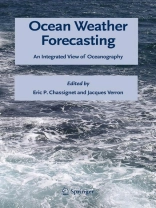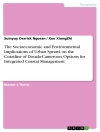Progress in a wide range of ocean research and applications depends upon the prompt and dependable availability of ocean information products. The field of physical oceanography has matured to a point where it is now conceivable to combine numerical models and observations via data assimilation in order to provide ocean prediction products on various spatial and time scales. As a result, many nations have begun large-scale efforts to provide routine products to the oceanographic community. The Global Ocean Data Assimilation Experiment (GODAE) provides a framework for these efforts, i. e. , a global system of observations, communications, modeling, and assimilation that will deliver regular, comprehensive information on the state of the oceans, in a way that will promote and engender wide utility and availability of this resource for maximum benefit to the community. The societal benefit will be an increased knowledge of the marine environment and ocean climate, predictive skills for societal, industrial, and commercial benefit and tactical and strategic advantage, as well as the provision of a comprehensive and integrated approach to the oceans. We therefore considered it timely, given the international context, to bring together leading scientists to summarize our present knowledge in ocean modeling, ocean observing systems, and data assimilation to present an integrated view of oceanography and to introduce young scientists to the current state of the field and to a wide range of applications.
Зміст
Perspectives from the Global Ocean Data Assimilation Experiment.- Modeling.- Some Ocean Model Fundamentals.- Models of the Ocean: Which Ocean?.- On the Use of Hybrid Vertical Coordinates in Ocean Circulation Modeling.- Nesting Ocean Models.- Oceanographic observations and atmospheric forcing.- Satellite Measurements for Operational Ocean Models.- In-Situ Observations: Platforms and Techniques.- In-Situ Observations: Operational Systems and Data Management.- Surface Fluxes for Practitioners of Global Ocean Data Assimilation.- Data assimilation.- Ocean Data Assimilation Using Sequential Methods Based on the Kalman Filter.- What Is Data Assimilation Really Solving, and How Is the Calculation Actually Done?.- Importance of Data: A Meteorological Perspective.- The ECMWF Perspective.- Systems.- Mercator Ocean Global to Regional Ocean Monitoring and Forecasting.- The Forecasting Ocean Assimilation Model (Foam) System.- Ocean Prediction with the Hybrid Coordinate Ocean Model (HYCOM).- Bluelink: Large-To-Coastal Scale Operational Oceanography in the Southern Hemisphere.- Operational Oceanography: A European Perspective.- Mersea: Development of a European Ocean Monitoring and Forecasting System.- Internal Metrics Definition for Operational Forecast Systems Inter-Comparison: Example in the North Atlantic and Mediterranean Sea.- Operational Oceanography in the U.S. Navy: A GODAE Perspective.- Applications of Ocean Forecast Information for Economic Advancement in Developed and Developing Societies.- Forecasting the Drift of Objects and Substances in the Ocean.- On the Use of Data Assimilation in Biogeochemical Modelling.- Ocean Forecast and Analysis Models for Coastal Observatories.












